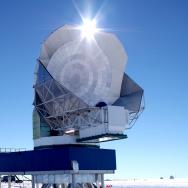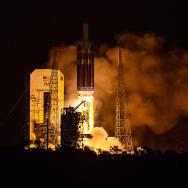Our understanding of the cosmos has come a long way since the early Mesopotamians described a flat, circular Earth embedded in a cosmic ocean. Now scientists build massive telescopes and use highly sensitive instruments to measure our universe. Still, many questions remain about what the universe is made of and how it has evolved over the past 13.8 billion years.
A series of eight free lectures at the University of Chicago will discuss the history of observational cosmology, how telescopes work and the big questions scientists hope to answer experimentally in future.
The series is part of the biannual Arthur Holly Compton Lectures, which aim to make the physical sciences accessible to the general public. Sponsored by the University’s Enrico Fermi Institute, the lectures will begin Sept. 29 and will be held Saturdays through Nov. 17 from 11 a.m. to noon in Room 106 of the Kersten Physics Teaching Center.
Delivering the lectures this fall will be Amy Lowitz, a postdoctoral scholar at the University of Chicago who has worked on the South Pole Telescope. Lowitz received her PhD from the University of Wisconsin-Madison, where she specialized in detector development for telescope cameras. Later, she worked on the South Pole Telescope for the University of Chicago. Lowitz currently works with the Kavli Institute for Cosmological Physics and Argonne National Laboratory, where she continues to work on instrumentation for the South Pole Telescope.
Lowitz’s lectures, entitled “Nuts and Bolts Cosmology,” will have an emphasis on microwave cosmology and the instruments used to measure the cosmos. Over the course of eight lectures, Lowitz will discuss the cosmic microwave background—a glow of light leftover from the first 380,000 years of the universe, which she and her fellow scientists are measuring with the South Pole Telescope. She also will cover the history of cosmology, the origins of light detection, how telescope cameras are built and her work at the South Pole.
“I hope that telling the story of how we got to where we are now will help the audience understand the current state of science and why we're working on the things we're working on now,” said Lowitz. “Not only that, but I want them to understand why we’re building these giant, intricate instruments. Why are they useful? How do they drive discoveries?”
The Compton Lectures are named for Arthur Holly Compton, the pioneering physicist who led the world’s first man-made, self-sustaining nuclear reaction at UChicago in 1942. Compton won a Nobel Prize for demonstrating that light has the characteristics of both a wave and a particle.
For more information and the series schedule, visit the Compton Lectures site.

